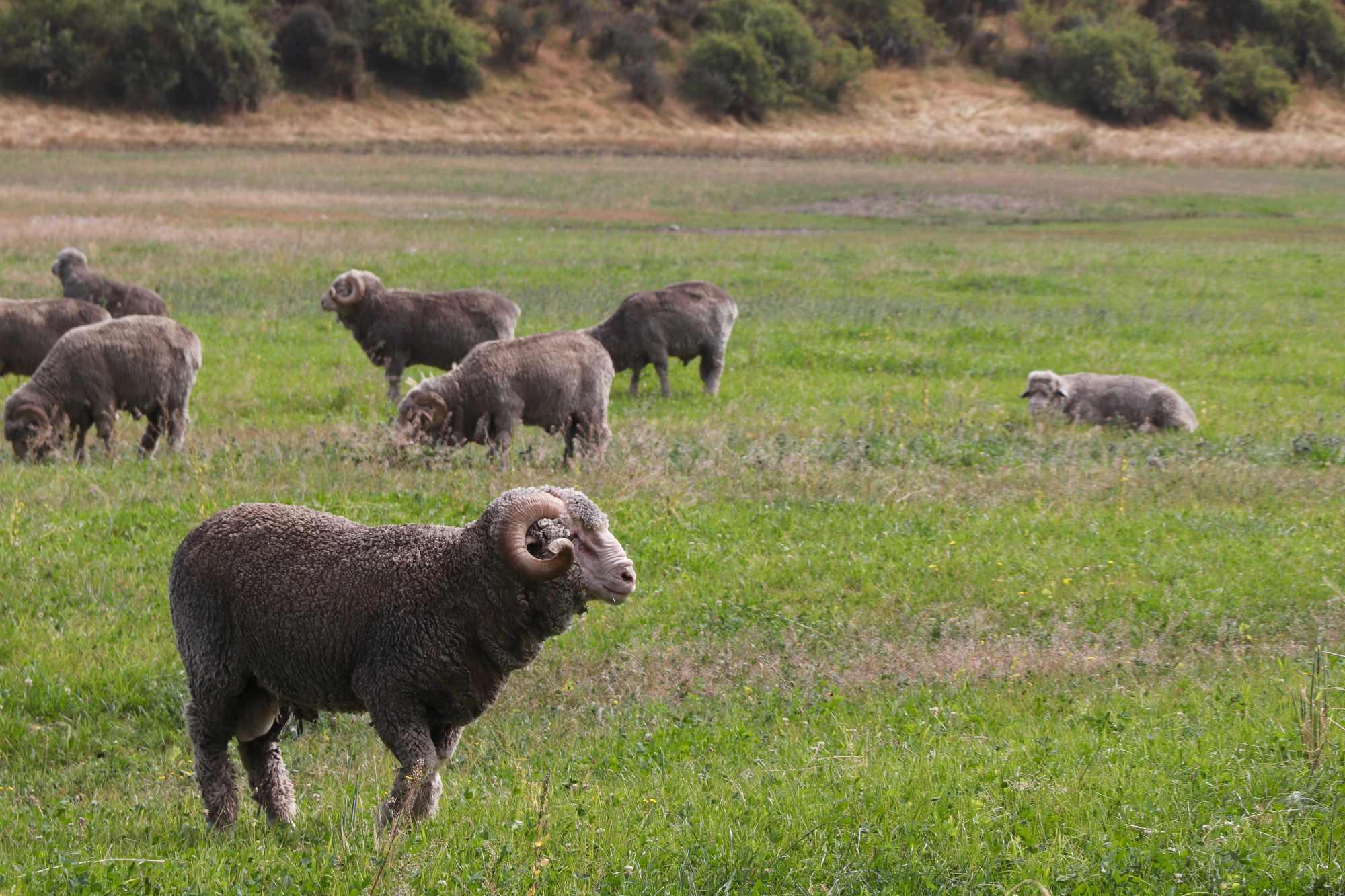Ah, the humble base layer: that filthy, sweaty rag that does the dirty work of your layering system. Under-appreciated and under-acknowledged, never getting any photo glory like your flashy outer layers, and yet an absolutely key element of your mountain clothing.

Base Layer 101
What is the function of the Baselayer?
The base layer sits right next to your skin, and its primary function is to manage sweat – we’re not (usually) looking for warmth and insulation here. While of course we’re generally skiing and snowboarding in cold temperatures, many people have a habit of over dressing to ensure they stay warm – which often results in heavy sweating. Unfortunately, sweating results in heat loss, so as soon as you stop moving you start becoming chilled. In sub-zero temperatures this is less than ideal and potentially very dangerous! Which is where the base layer comes in: moving sweat away from your body, where – if you’re using an appropriate layering system – it can harmlessly evaporate away.

These days most base layers are either made of synthetic materials – typically polyester or polypropylene – or merino wool, though hybrid designs featuring both are becoming more and more popular. While the end goal remains the same, both materials achieve it in slightly different ways, and with different pros and cons.
Synthetic sports underwear
Many mountain clothing manufacturers now have their own proprietary synthetic fabrics, the most well known of which are Helly Hansen’s Lifa® and Patagonia’s Capilene®, though most are fairly similar in terms of materials. They are usually cheaper than their merino counterparts, and wick sweat much better. The downside is that they often become smelly quite quickly; you can’t get away with wearing synthetic base layers for multiple days in a row like you can with merino.
How does synthetic thermal underwear work?
Synthetic base layers manage moisture by ‘wicking’ it away from your skin, in a similar way to how a lit candle wick draws wax along its length. This process, where liquid is drawn along a fibrous path, is properly known as capillary action. During high activity sport moisture and heat build up inside the base layer, creating a temperature and humidity gradient between the inside and outside of the garment. This is the driver of the wicking process – the highly humid air inside the garment naturally wants to move towards equilibrium, which means it wants to move to the lower humidity environment outside. As sweat comes into contact with the synthetic material, it is drawn along the fibres – without being absorbed – and out through tiny holes in the weave to the outside of the garment where it can evaporate away without chilling the body.
Due to their ability to better manage moisture, synthetic base layers remain the top choice for high output activities like ski touring, though as they require more frequent washing than merino they are more appropriate for day trips and single uses. They generally feel nice and smooth against the skin and dry much quicker than wool, so feel less muggy and weighty after heavy perspiration.
Pros and cons of Merino
Merino has been one of the buzzwords in the outdoor industry for the last few years, and for good reason. This almost too-good-to-be-true natural fibre is ideal for base layers: it manages moisture well, it remains warm when wet, and it can take literally WEEKS’ worth of sweat before it starts to smell and requires washing. The downsides are that it is typically more expensive than synthetic garments, doesn’t deal with moisture as well, takes longer to dry, and is less durable. Cheaper, lower-quality merino can also be itchy next to the skin – you get what you pay for, here.
Technically, merino doesn’t actually wick sweat, though the end result is the same. Rather than drawing moisture along fibres and out through tiny gaps in the weave, merino fibres actually absorb it. The inner core, or cortex, of a merino fibre is capable of absorbing over 30% of its own weight in moisture, which through the same humidity gradient outlined above is then drawn to the outside of the garment where it can evaporate away. We are typically taught that materials that absorb so much moisture – like cotton – are bad for base layers, but merino has a trick up its sleeve. The outsides of wool fibres are coated with a waxy substance called lanolin, which is water resistant. As this hydrophobic layer is the part that touches your skin, the feeling of dampness is reduced even when the garment is soaked. The same layer also helps wool garments shrug off light rain.
Merino wool has the additional benefit of retaining its insulating properties even when wet – and in fact even generates heat through the process of water absorption. Moisture is absorbed into the wool fibres in a reversible chemical reaction through the interaction of hydrogen bonds. The reaction generates heat when water is absorbed, and takes it up when the moisture is shed; this ‘magic’ is known as ‘heat of sorption.’ It allows wool garments to act as a ‘buffer’ to the wearer in changing environments: in cold climates relative humidity is typically higher outdoors than indoors, so a merino garment ‘conditioned’ to the drier environment indoors will immediately begin producing heat as it absorbs moisture when you go outside. This process typically occurs within two to five minutes, slowing down as the moisture content of the wool reaches equilibrium with the higher relative humidity of the new environment.
The downside of merino’s huge water absorption capability is that it takes longer to dry than synthetic materials, and so can feel heavy and slightly uncomfortable when saturated. It is best suited to lower intensity activities in cold weather, and due to its odour-resistance, longer trips where you don’t have the luxury of changing layers every day. Your friends will thank you for wearing merino layers on long ski boat trips or while tent-bound in a storm! Merino is also less durable than synthetics and requires more care when washing and drying, plus it’s usually more expensive.
Hybrid underwear made of synthetic and merino wool
Many brands are now using a combination of synthetic and merino fibres to create hybrid garments. These pieces combine the best attributes of both materials to produce excellent base layers that are great for all around use. They typically resist odour and insulate much better than synthetic garments (though not quite as well as pure merino), and manage moisture better and are more durable than pure merino.

Which Base Layer Should You Use When?
So given the difference in technology and materials, how do you decide which base layer to use? Fundamentally, it all depends on what you are doing and where in the world you are. Late spring ski touring for corn snow in the Alps places very different demands on both your body and equipment than riding lifts in a mid-winter Hokkaido blizzard. How much sweat do you need to manage? Are you going back to a hotel in the evening where you can change, and have more layers for the next days? Or will you be camping for a week on an Alaskan glacier with no space for extra layers?
Warm Weather and High Output:
Helly Hansen Dry – Probably the most iconic outdoor sports clothing on the planet; if you’ve ever been anywhere near a mountain, river or bike park then you’ve probably seen someone sporting the famous HH striped sleeves. Built in a open mesh construction using Helly’s Lifa® – a water-hating polyprop
ylene fabric composition – the Dry series simply breathes and wicks sweat better than anything else on the market. HH’s unique manufacturing process – akin to bursting a water-filled balloon and allowing the molten-polypropylene to stream out of the tiny hole – creates a much smoother fibre than anything you’ll find in other synthetic base layers. In addition to feeling nicer against the skin a smoother fibre presents nasty smelling bacteria far fewer places to hide, so unlike some cheaper alternatives Lifa doesn’t hold odour after washing. Much, at least.
When you know you’ll be sweating hard, HH Dry is the stuff you want to be wearing to move that moisture away from your skin. Even better, it’s cheap and extremely durable! Downside? If you have any compassion for your fellow human beings, you’ll be washing it a lot.
Fit: Tight. These babies come in a very trim, athletic fit, and come up a littler smaller than other brands in the same size; consider going one size bigger than normal.
Cold Weather, Low Output, Extendend Trips:
Icebreaker Oasis – made out of luxurious Bodyfit 200 merino wool, Icebreaker’s Oasis line is incredibly comfortable next to the skin, with no hint of the itch that you can find with lower quality merino. This stuff can be worn for literally weeks on end without smelling, and does a great job of regulating your body temperature. If you’re going to be sitting on chairlifts in cold temperatures, or touring/trekking for several days without baggage space for extra layers, both you and your mates will be happy that you’re wearing Icebreaker merino. On top of that, Icebreaker are one of the most environmentally friendly brands around – their wool comes exclusively from sheep raised humanely through sustainable low intensity farming methods in New Zealand’s Southern Alps. Using their ‘Baacode’ feature you can even track the wool used to make your garments right back to the farm it came from! If you want to stay warm, nice-smelling and simultaneously do your bit for the environment, look no further!
Fit: Snug. Sizing is a little more generous and true-to-size than HH, but the Oasis line is still designed to closely hug your body. This maximises its moisture management and insulating properties, but if you have any doubt which size to take I’d still suggest the larger.

All Conditions, Everyday, Everything:
Helly Hansen Warm Ice – An excellent and supremely versatile series, the HH Warm Freeze line combines the best of merino and synthetic fibres to produce a truly great base layer. Featuring an interior of Helly’s proprietary Lifa® – possible the best sweat-wicker known to man – and an outer of high quality merino wool, these beauties will keep you warm, dry and comfortable all day long. In addition to moving sweat away from your skin, the synthetic fibres help maintain structure and durability, and being extremely hydrophobic, ensure the material next to your skin is always dry. The merino adds a lovely soft, luxurious feel plus a little insulation (which still works even when damp), and helps prevent that sweaty stench. It’s not quite as odour-resistant as pure merino, but you can still get 5+ days use out of one piece between washes without clearing the bar during après. It also enhances the wicking process by actively sucking moisture through the Lifa® mesh.
The HH Warm Ice garments are great base layers for any activity level, and ideal for extended trips and travelling with tight baggage restrictions.
Fit: Designed to sit right against your skin, the HH Warm series again comes in a tight fit. Whilst this does help to maximize moisture transport, if you normally fit somewhere between sizes then definitely go for the larger.
Extreme Cold and Standalone Layer:
Sweet Protection Saviour – The Sweet Protection Saviour series is one of my absolute favourite technical clothing lines of all time – I use it skiing in winter and kayaking on glacial meltwater in summer. Made of four way stretch 1-sided brushed fleece, they are very comfortable next to the skin, quickly wick sweat and breathe very nicely. Unlike most synthetic pieces, you can also normally get 2-3 days use out of them between washes before they start to smell too badly, as long as you use them in appropriate temperatures. I also really like how versatile they are: I wear them as a single layer under a shell jacket and trousers on reasonably cold days, and sometimes wear the top under a midlayer when the mercury really plummets (I’ve never needed any more layers on my legs than the Saviour bottoms). However the real beauty of these fine garments is that as the outsides are reasonably windproof, you can comfortably ski tour in them in most conditions without needing a sweat-retaining shell jacket on top.
Available in separate top and bottoms or as a one-piece suit, I prefer the flexibility of the separate pieces – plus it makes going to the toilet easier!
Fit: Reasonably snug and form-fitting but not super tight, the Sweet Saviour series performs well whilst also looking cool at the bar. The tops are quite long which keeps your lower back warm, while the pants are cut off just below the knee – a nice touch that avoids uncomfortable bunching in your ski boots!


